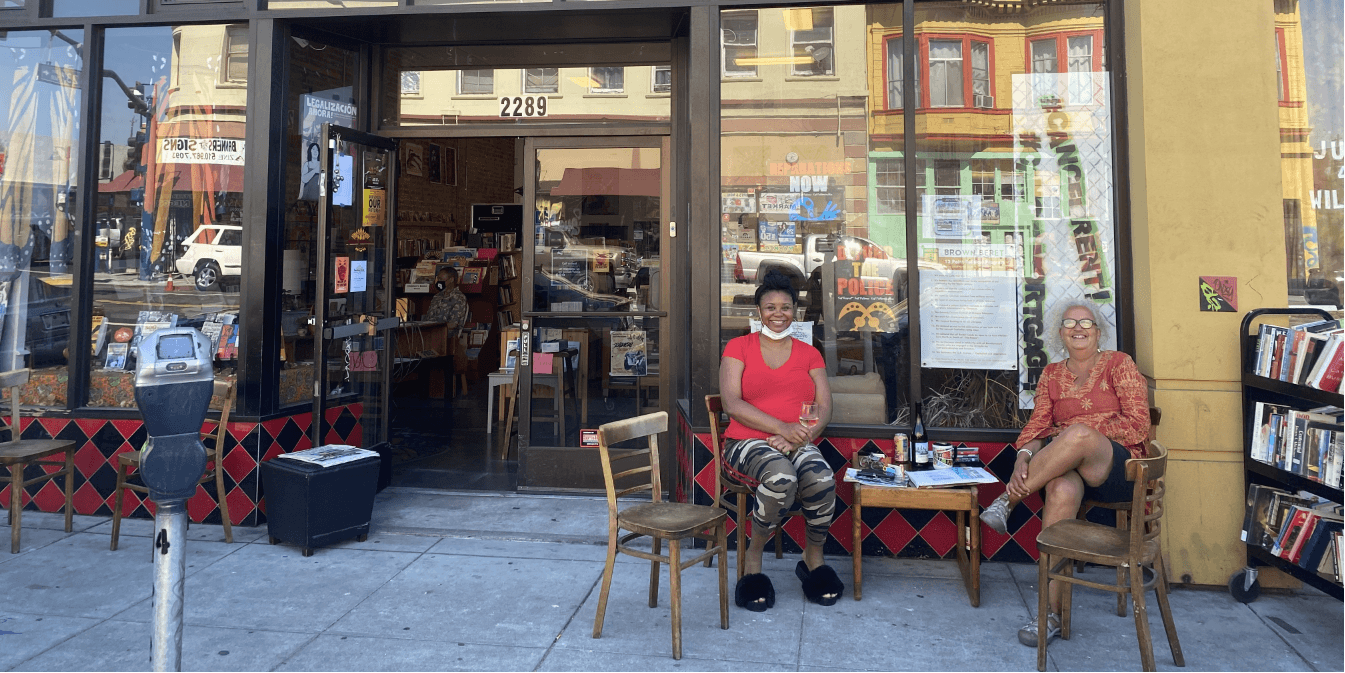Fueling Resilience: Special Purpose Credit Programs and the Future of Small Business Ownership

Like many people in America today, I’m suffering from a bad case of economic policy whiplash. Policies are being bounced back and forth with the same force and unpredictability as a ping pong match. With every refresh of my social media feed, I’m confronted with a new percentage, a fresh headline, another shift: 10% on aluminum, 25% on Chinese goods, rollback on this, retaliation on that, then escalation. The numbers change faster than we can process.
However, unlike in a game of ping pong, where losing only bruises your ego, these policy swings can uproot entire livelihoods and fracture communities. Communities of color have long been excluded from stable financial infrastructure, and sudden policy reversals land hardest on underserved businesses already operating with thinner margins and fewer supports. For small business owners of color, policy whiplash all too often leads to the death of their businesses — deepening the racial wealth gap and accelerating economic precarity.
This is where Special Purpose Credit Programs – targeted lending tools designed to serve the credit needs of historically excluded groups – can play a crucial role. While I’ll break down what SPCPs are and how they work later in this blog, what’s important to understand now is that these programs offer one of the most promising, yet underutilized, tools financial institutions can use to respond to the inequities baked into our economic system. They don’t just react to crisis — they help marginalized communities build economic resilience.
Federal Rollbacks Amidst an Already Fraught Economic Landscape
In recent months, the federal government has begun to unravel initiatives supporting businesses of color, including:
- Proposed budget cuts to the U.S. Small Business Administration – would reduce funding for programs supporting minority-owned businesses
- CDFI Fund slashed by 90% – would cut funding from $324 million to $33 million, gutting support for underserved communities
- Rescission of key 2023 updates to the Community Reinvestment Act – would rollback updates to strengthen and modernize the CRA
These rollbacks erode the already fragile infrastructure that many businesses of color depend on. In this absence, banks and financial institutions have a chance – and a responsibility – to step in.
SPCPs are a legal yet underutilized tool to do just that. When designed and implemented effectively, SPCPs are a powerful mechanism for expanding small business ownership and insulating businesses from volatility and disinvestment. By investing in BIPOC entrepreneurs through SPCPs, banks can not only support a stronger and more equitable economy but also meaningfully advance their ESG and CRA obligations.
Why it Matters: Small Businesses are America’s Backbone
From Somali-owned coffee shops in Minneapolis to taquerías in San Francisco’s Mission District, small businesses serve as cultural anchors. When neighborhoods lose these businesses, they lose more than revenue — they lose cultural hubs, trust, and opportunity. Beyond offering goods or services, these businesses often sponsor Little League teams, donate to food banks, create safe spaces for youth, and offer jobs to those often excluded from traditional markets.
Supporting BIPOC-owned small businesses is an act of economic repair. Entrepreneurs of color face systemic barriers – redlining, biased underwriting – that compound over generations. Closing the racial entrepreneurship gap can revitalize disinvested neighborhoods and unlock significant economic growth, including stronger tax bases, lower unemployment, and greater civic participation. In fact, closing racial gaps in ownership could add $1 to $1.5 trillion to the U.S. economy. Investing in BIPOC entrepreneurs is not charity — it’s an economic imperative.
Despite the well-documented importance of BIPOC-owned small businesses, persistent racial disparities in lending remain. Even after controlling for financial risk, firms owned by people of color paid significantly higher interest rates than their white-owned counterparts — 2.88% more for Asian-owned businesses, 2.91% for Hispanic-owned, and 3.09% for Black-owned businesses. The cumulative result is staggering, amounting to an $8 billion annual overpayment in interest by minority-owned small businesses. As interest rates remain high and public dollars recede, BIPOC entrepreneurs are paying the steepest price.
Small businesses are the backbone of the American economy and stakeholders – from regulators to financial institutions – must do more to ensure that all entrepreneurs have a fair shot at accessing capital.
How Special Purpose Credit Programs Can Help
What if a low credit score didn’t mean a dead end for small businesses — especially for entrepreneurs without deep capital or years of revenue history? Too often, traditional lending models treat these businesses as risky, even when they are the most deeply rooted in their neighborhoods. But what if we flipped the script? What if we created credit programs designed not to gatekeep but to unlock opportunity?
That’s the promise of SPCPs.
SPCPs are targeted lending programs designed to meet the credit needs of people who have historically been excluded – whether by race, income or geography – from access to fair and affordable financing. Most SPCPs today are concentrated in the homeownership space but they’re just as vital for business ownership, another proven pathway to building wealth.
To advance the adoption of tools like SPCPs that can support equitable lending and banking practices in this fraught political and economic environment, Greenlining is collaborating with community-based organizations to develop community-driven standards for financial institutions. These standards will provide banks a blueprint for embedding racial equity into their business. Following a peer review process, Greenlining will publish the standards in March 2026.
As part of this initiative, my work has focused on designing a SPCP template grounded in equitable lending — a clear, actionable framework for implementation. At their core, SPCPs offer a more equitable alternative to traditional small business lending models which often center privileged business owners in underwriting criteria. SPCPs revise these assumptions, recognizing that many conventional standards reflect systemic inequities. These programs reimagine what qualifies as “creditworthy,” challenging assumptions that equate creditworthiness to larger, mostly white-owned businesses.
Instead of penalizing BIPOC entrepreneurs, SPCPs meet them where they are and unlock their potential. They illuminate entrepreneurial strengths that extend beyond credit scores or inherited assets. SPCPs prioritize equity and flexibility — the very tools needed to weather today’s policy shocks.
Here’s how successful SPCPs can transform small business lending:
- Rethinking Risk Assessment: Alternative Underwriting
Many SPCPs lower credit barriers, with some even eliminating credit scores from risk assessment altogether. In their place, lenders are turning to alternative credit data and cash flow analytics to build a fuller, fairer picture of a borrower’s financial health. When used responsibly and adjusted for data privacy concerns, alternative data carries strong potential for financial inclusion as including positive utility and rent payment history can improve credit scores for the majority of unscored or subprime consumers. This signals a more inclusive future – one where products match people.
- Capacity Building and Technical Assistance
Capital alone is not enough. In Greenlining’s 2021 POC Small Business Network Report, author Mercedes Gibson, Senior Program Manager, notes “significant gaps in technical assistance often prevent small businesses from pursuing funding opportunities.” The solution? Pairing capital with hands-on support. Consider California’s Technical Assistance Expansion Program: since 2018, its centers have served over 560,000 small businesses – 55% owned by entrepreneurs of color – with no- or low-cost training, resulting in $4.5 billion in capital raised, 5,000 new businesses launched, and 35,000 jobs created.
- Affordability and Fee Reduction
Even small fees pose barriers, deterring applicants from thin margins. Many SPCPs eliminate application, processing and penalty fees. For example, US Bank’s Diversity Lending Program waives its annual fee on lines of credit over $50,000, ensuring accessible credit for small business owners. In order to give small businesses across the country a fighting chance, lending must also prioritize affordability.
- Inclusive Lending Terms and Eligibility
Equitable SPCPs offer fixed or capped interest rates that are not tied to credit profiles, providing transparency and predictability. This allows borrowers to plan with confidence and focus on growth. To better meet small business operational needs, SPCPs can also offer access to small-dollar loan products – starting as low as $500 – to address gaps created by high minimum loan thresholds.
Looking to the future
Alternative lending models have demonstrated how capital access can be expanded. Yet these opportunities remain rare, often hard to find and short-lived.
But what if they were everywhere?
Imagine a future where SPCPs are standard practice — visible, easy to access, and available for everyone deserving. While not a silver bullet, SPCPs are among the most powerful tools banks can offer to support entrepreneurs that face inequitable economic barriers. As public funding declines, private financial institutions must take the lead on solutions, not just by participating, but by actively investing in the resilience of small businesses that form the backbone of our neighborhoods.
At Greenlining, we’re working directly with communities of color that have been underserved by our existing economic system, so we can provide banks across the country with a blueprint for developing and offering equitable SPCPs. With this work, and beyond, we are pushing for a future where equitable SPCPs are the standard, not the exception — because that is how banks can play their role in shaping an economic future that is more inclusive, more stable, and more just for everyone.



